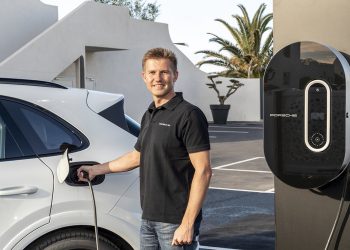Tesla has encountered a significant setback in its push for self-driving robotaxis. Elon Musk confirmed a delay in the release of the next-generation AI5 chip. Initially scheduled for late 2025, the chip will not be ready in large numbers until mid-2027. This delay also impacts the planned launch of Tesla’s Cybercab, which will operate without a steering wheel or pedals.
Musk announced the updated timeline on X (formerly Twitter), stating that Tesla will not have enough AI5 chips for production until mid-2027. The company now requires “several hundred thousand completed AI5 boards,” a goal that has shifted two years later than originally planned. In June 2024, Musk had projected the chip would be available in the second half of 2025.
This delay creates a major issue for Tesla. Musk had long touted the AI5 chip’s potential, claiming it would be ten times more powerful than the current AI4 system. The AI5 chip was supposed to make the existing system obsolete. However, Tesla now needs to depend on the older AI4 hardware for much longer.
The delay is also causing scheduling issues for the Cybercab. Tesla had planned to start production in 2026, with a potential launch in the second quarter. But if the AI5 chip doesn’t arrive until mid-2027, the Cybercab will have to rely on the AI4 system. The AI4 system supports semi-autonomy, but it cannot deliver the fully unsupervised driving Tesla has promised.
The AI4 system has powered all Tesla cars since 2024. However, it lacks the capability to provide fully autonomous driving, which means the Cybercab, designed for complete autonomy, will still require a driver to stay alert.
The delay isn’t entirely bad news for current Tesla owners. The AI4 system will continue to function for some time, and Tesla plans to update its software. Still, the delay in the AI5 chip is disappointing for those expecting hands-free autonomy.
The delay has sparked internal discussions about the Cybercab’s design. The company’s chairwoman proposed adding a steering wheel and pedals to the vehicle. Musk swiftly rejected this idea, confirming that the Cybercab would launch without these controls. His decision adds more risk to the project. A vehicle without controls will only work in limited environments.
For those eager for Tesla’s next step in autonomous driving, the mid-2027 AI5 chip timeline is a major letdown. It confirms that Tesla’s next big leap in self-driving EVs is still years away. With the Cybercab launch set for 2026, Tesla must rely on software improvements to compensate for the hardware limitations.
Experts have raised concerns about using outdated hardware in a vehicle without driver controls. Given this, many believe the Cybercab will need a steering wheel and pedals as a backup system. This will allow the vehicle to operate safely while Tesla works toward delivering the AI5 chip.
READ: Tesla Sales Plummet in Germany as Europe’s EV Market Thrives











